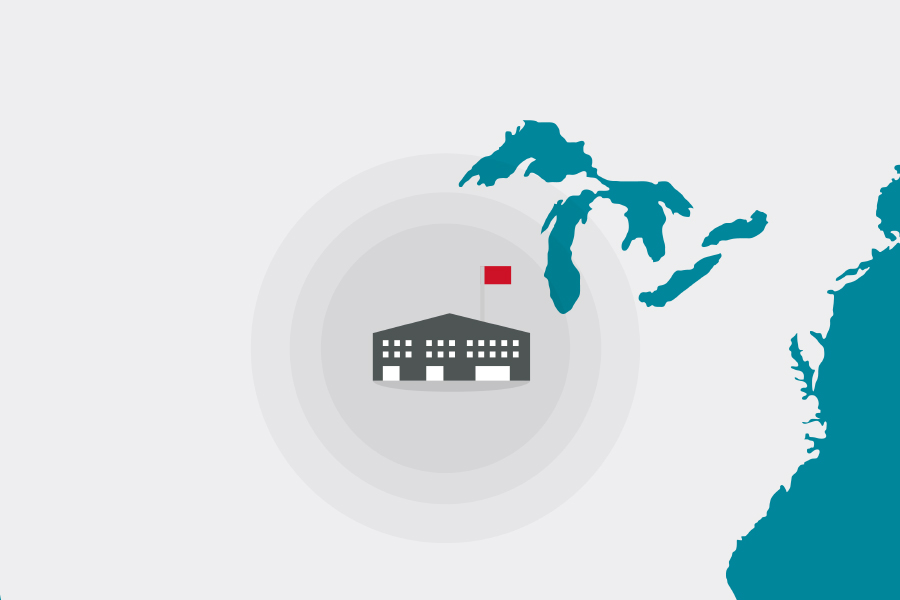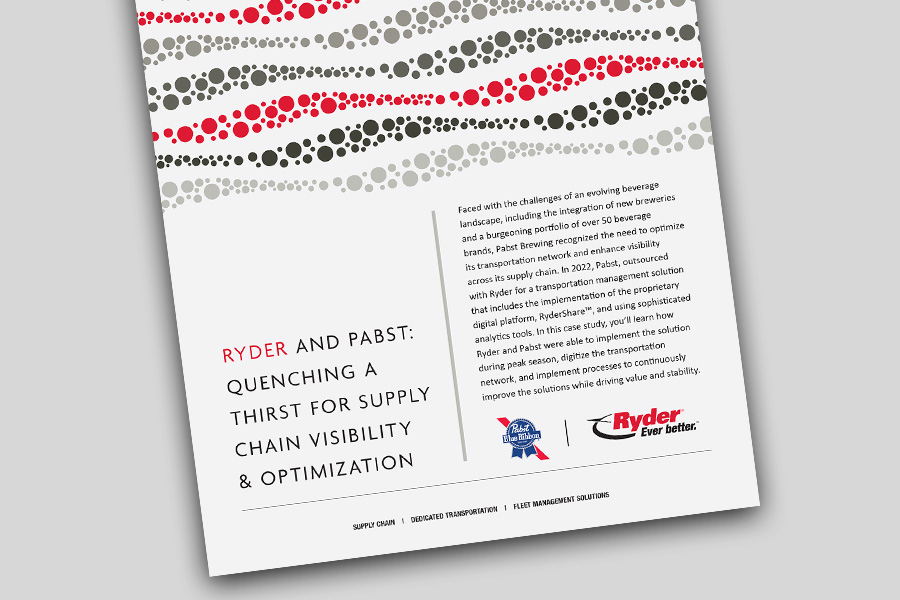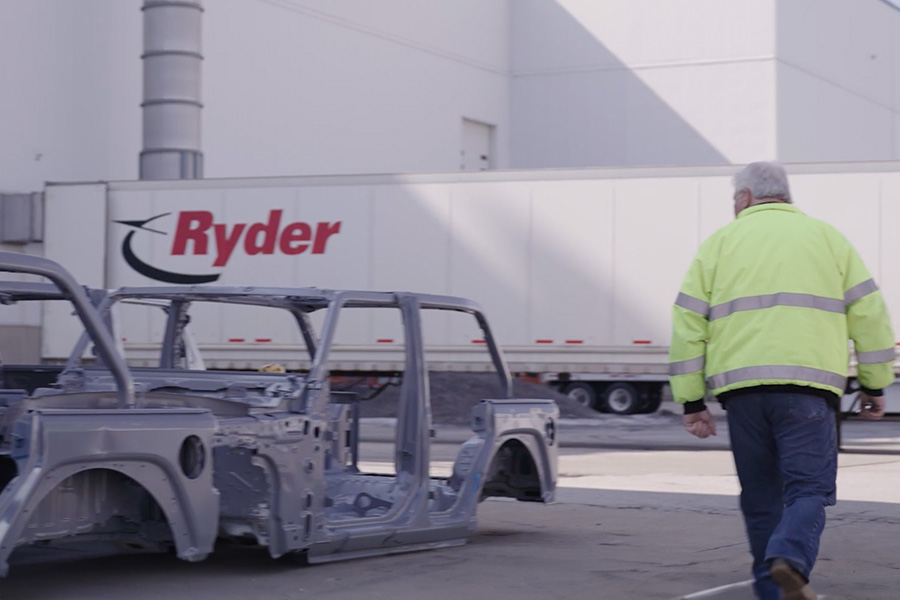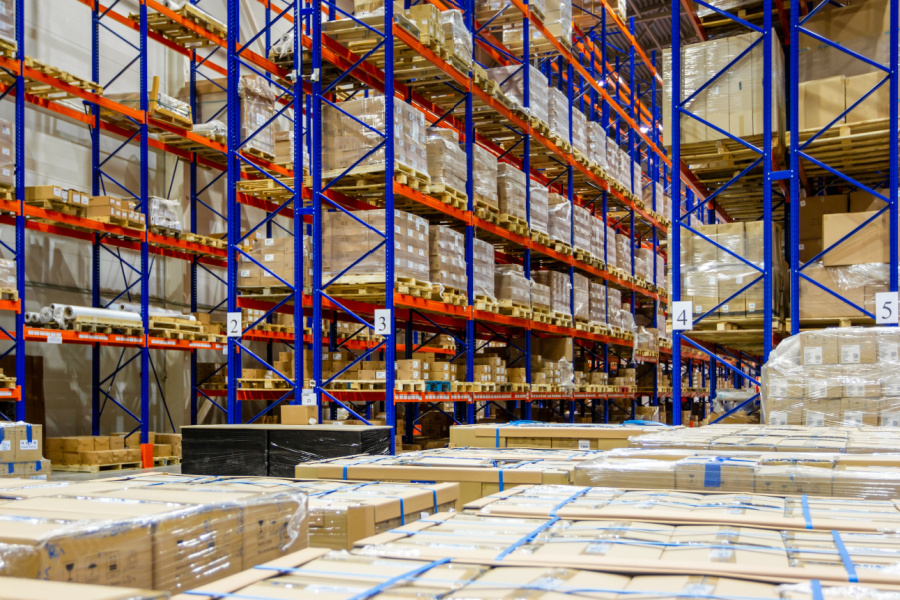Updated July 24, 2024.
Whether you have an e-commerce, brick-and-mortar, or omnichannel operation, your warehouse is a critical part of your retail supply chain. Many aspects come into play: location, size, automation, workforce, technology systems, just to name a few.
If you get these variables right, your orders will be able to reach customers quickly, which means higher customer satisfaction and lower operating costs for your business. If any of the variables are off, you could end up with slow, inflexible fulfillment processes that cause your growth to stagnate.
In this article we are going to address the first variable in warehousing: LOCATION, LOCATION, LOACATION. We’re taking a deep dive into the pros and cons of centralized and decentralized warehouses so you can determine which is right for you – and how a nationwide fulfillment provider can help.
What is centralized warehousing?
Centralized warehousing refers to a warehouse management strategy where a company stores its goods or products in one or a handful of large regional facilities serving one region, such as the West Coast or the Northeast. Centralizing inventory is a traditional method of distribution that’s commonly used by large-scale retailers to reach their store locations effectively.
Advantages of centralized warehousing
Lower operating costs
Maintaining one or a few centralized warehouses can lead to lower operating costs compared to managing multiple smaller warehouses. Costs such as rent or lease payments, utilities, property taxes, and maintenance expenses can be significantly reduced when concentrated in fewer locations. This means higher profit margins per order and a healthier bottom line.
Optimized inventory levels
Centralized warehousing allows for better visibility and control over inventory levels. This can help companies minimize excess inventory and reduce the costs associated with carrying surplus stock. Additionally, centralized warehousing facilitates better inventory management practices, such as just-in-time inventory systems, which can further reduce storage costs.
Economies of scale
By consolidating inventory into one or a few large warehouses, companies can often benefit from economies of scale. This means they can negotiate better rates with suppliers for bulk purchases of goods, as well as potentially lower costs for storage and transportation due to higher volumes.
Disadvantages of centralized warehousing
High shipping costs
Because all of your orders are shipped out of the same location regardless of the end destination, this can mean shouldering much higher shipping costs. For example, if your warehouse is in Pennsylvania and your end customer is in Oregon, this will require a costly cross-country shipping method. Furthermore, this makes it very difficult to estimate your shipping costs accurately because they can vary hugely from customer to customer.
Longer last-mile delivery timeframes
The so-called ‘last mile problem’ is something every retailer has to grapple with – and this is much more challenging if your inventory is centralized. To ship affordably to distant customers, longer delivery times via economy ground shipping are often necessary. As two-day shipping becomes the norm in e-commerce, centralized warehousing makes it difficult to meet these expectations.
Vulnerability to disruption
When you’re running a business, you always need to prepare for unexpected events that could disrupt your operation. But if your only facility is out of action due to a power outage, fire, or natural disaster, or this makes it impossible for you to pivot and continue fulfilling orders – lack of flexibility that has been keenly felt by some retailers during the pandemic.
Is centralized warehousing right for your business?
You need to keep in mind that centralized fulfillment makes the location of your facility critical to your responsiveness – especially if you’re serving a nationwide customer base.
It’s ideal to choose a region where shipping costs will be fairly even across the country. For example, if your warehouse is based in Colorado, this gives you two-day shipping capabilities to both the East and West Coasts. However, these regions experience high demand for industrial real estate for precisely this reason – meaning that your cost savings could be reduced.
What is decentralized warehousing?
Decentralized warehousing takes advantage of multiple strategic locations to store inventory closer to the end customer. Facilities are selected according to a variety of factors, such as being located close to key transportation routes or metro areas. Each ‘node’ of this warehouse network can also be customized to suit the regional needs of customers in that area, such as storing certain SKUs.
Advantages of decentralized warehousing
Faster delivery
By allocating your orders to whichever facility can deliver to your customer the fastest, you can lower delivery times and improve customer satisfaction. This is especially valuable during peak season, as it allows you to be more adaptable in how you manage orders during periods of high demand.
Reduced shipping costs
Placing warehouses closer to customers reduces the distance goods must travel, lowering shipping costs and delivery times. By using facilities that are close to key customer hubs, you can gain the advantage of two-day or even same-day shipping – without shouldering a massive cost burden to do so.
Disadvantages of decentralized warehousing
High operating costs
Running multiple fulfillment operations can come with a big price tag depending on the specifications demanded by your products. This is something important to be aware of regardless of whether you’re self-fulfilling or outsourcing to a 3PL that has a network of facilities. With a 3PL you can offset these cost through a multi-client warehouse facility in which you share costs with other companies.
Difficulty having full oversight
When there are multiple locations responsible for storing your inventory or fulfilling orders, it means investing considerable time in periodic audits at your facilities to monitor quality control and staff training. Because the more warehouses you have, the more personnel, machinery, and procedures you need to keep things running smoothly.
Inventory management
When your inventory isn’t stored in one place, stock takes and SKU rationalization require far more time and coordination across facilities. Moreover, having increased storage space can create a tendency to order more SKUs than necessary, which can make SKU management more difficult.
Is decentralized warehousing right for your business?
If you process a large volume of orders to a widely distributed customer base, you’re likely to benefit from a decentralized warehousing strategy that puts your product much closer to customers. However, it’s important to weigh your savings in carrier fees against increased running costs, including the use of advanced inventory management or ERP systems to ensure that SKUs are in the right place at the right time.
Get the best of both worlds by partnering with a nationwide fulfillment provider
Every business is unique. It’s important to understand neither approach is a magic bullet to the complexities of inventory management. Both strategies have their own list of pros and cons, and you will need to figure out how to capitalize and mitigate these as you grow.
When retail is such a fast-evolving landscape, you also need to appreciate that what works for you right now might not be fit for purpose in two years’ time – or even two months’ time, as the pandemic has so starkly demonstrated.
That’s why it’s essential to keep analyzing warehouse performance, shipping costs, and delivery speeds as your business grows to answer the critical question: “Is my warehousing strategy still working for me?”
If the answer is no, now could be a good time to start working with a fulfillment provider who can put a nationwide network of facilities at your disposal. This is the perfect solution for retailers who would benefit from a hybrid warehousing strategy that gives them the best of both worlds. For example, you can deliver much stronger peak season logistics if your partner can provide you with temporary warehousing space to accommodate higher than normal order volumes.
By gaining access to high-quality infrastructure and expertise, your 3Pl can assist you in finding scalable warehousing solutions that are both cost-effective and able to exceed customer expectations for fast and effective delivery.




